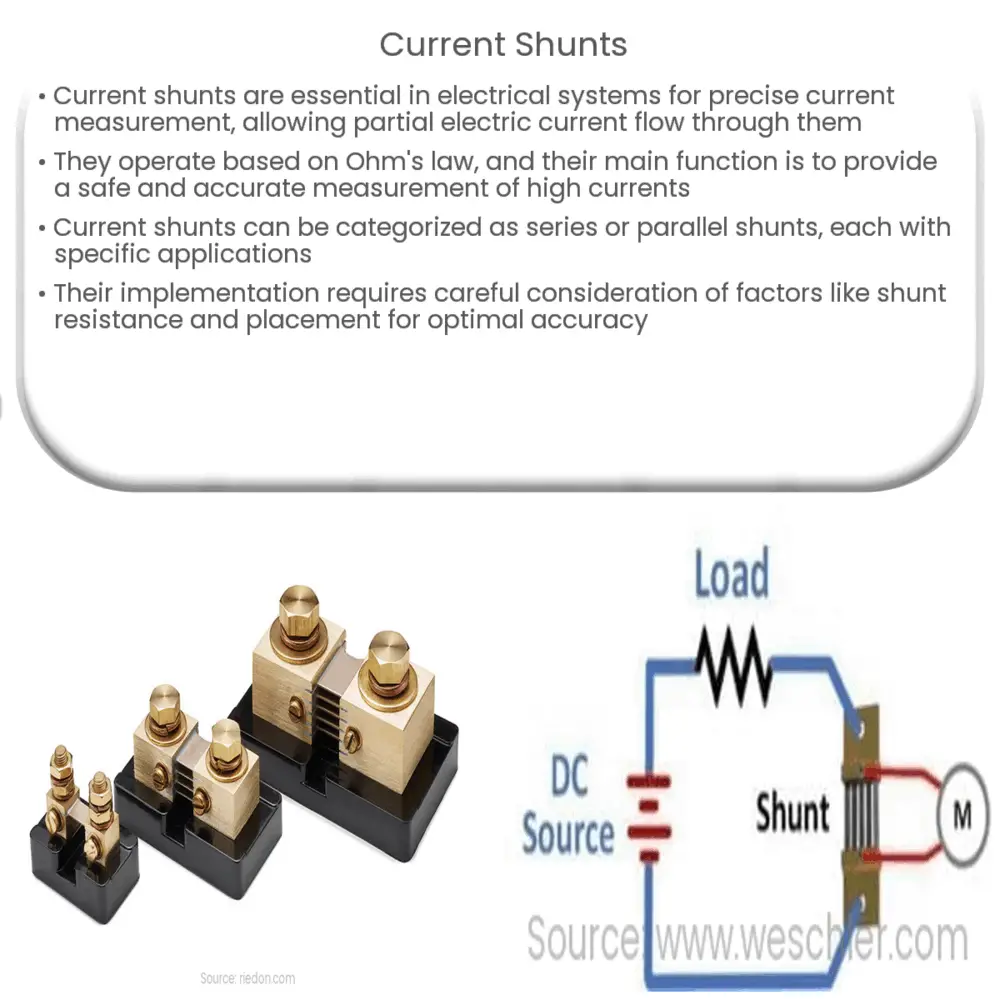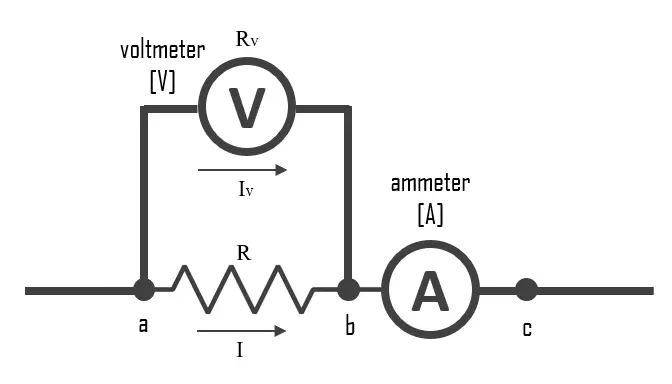Explore the function, types, and factors to consider when using current shunts for accurate electrical current measurements.

Understanding Current Shunts
Current shunts are critical components in electrical and electronic systems used for precise current measurement. They act as a bypass or shortcut in the circuit, allowing a small portion of the electric current to flow through them.
Function of Current Shunts
A current shunt functions by creating a low resistance path in an electrical circuit, encouraging a certain proportion of the total current to flow through the shunt. This current can then be measured, giving an indication of the total current flowing in the circuit. The use of a shunt allows for the safe and accurate measurement of high currents which could potentially damage sensitive measuring instruments.
The Principle of Ohm’s Law
Current shunts are designed and implemented based on Ohm’s law, which states that the current passing through a conductor between two points is directly proportional to the voltage across the two points. Hence, by measuring the voltage drop across the shunt resistor, the current flowing through it can be calculated.
- Ohm’s Law formula: I = V/R
- Where:
- I is the current
- V is the voltage
- R is the resistance
Types of Current Shunts
Current shunts are typically categorized into two main types: series shunts and parallel or shunt shunts.
- Series Shunts: In this type, the shunt resistor is placed in series with the load. The total current flows through the shunt resistor, and the voltage drop across it represents the current flowing in the circuit.
- Parallel Shunts: Also known as shunt shunts, these are connected in parallel with the load. A fraction of the total current flows through the shunt, and by calculating this, we can ascertain the total current in the circuit.
Each type of shunt comes with its advantages and disadvantages, and the choice of shunt to use depends on the specific requirements of the system in question.
Key Factors When Using Current Shunts
There are several key factors to consider when implementing current shunts in a circuit. These factors directly affect the accuracy and effectiveness of the shunt’s operation.
- Shunt Resistance: Shunt resistance should be carefully selected to be low enough to minimize power loss, yet high enough to generate measurable voltage drops.
- Temperature Coefficient: Shunts are subject to temperature coefficients, which can alter their resistance as temperatures change, leading to inaccurate readings. Selecting shunts with low temperature coefficients is essential for accuracy.
- Shunt Placement: Placement in the circuit can impact a shunt’s effectiveness. It should be placed where it won’t affect the operation of other components or introduce unwanted resistance.
Application of Current Shunts
Current shunts are widely used across various fields. They are essential in industries such as automation, automotive, power supply design, and renewable energy systems for current monitoring and control. They are also used in research and development laboratories and in the educational sector for teaching electrical principles.
Conclusion
In conclusion, current shunts play a crucial role in electrical and electronic systems by enabling accurate current measurement. Understanding the types of current shunts, the principle of their operation based on Ohm’s Law, and the important factors to consider when using them can facilitate the design of more efficient and effective systems. They are fundamental components in a vast range of industries, proving their versatility and the significant role they play in our technologically driven society.



